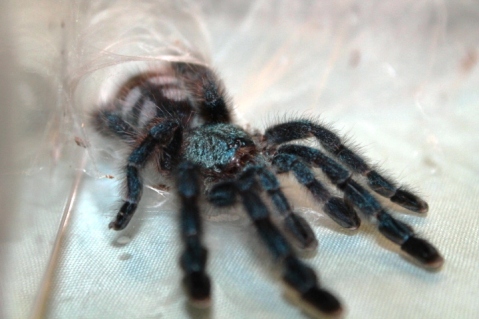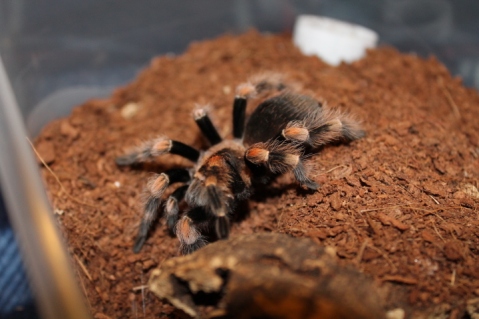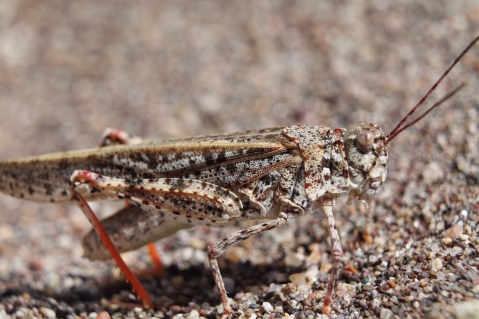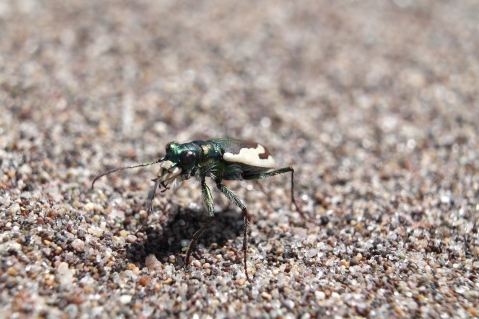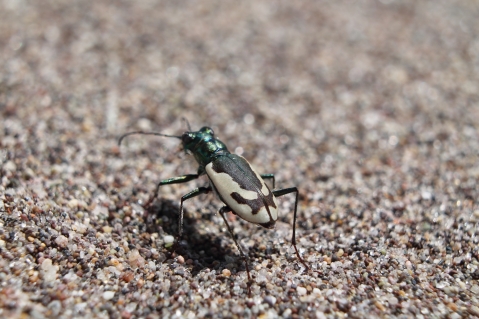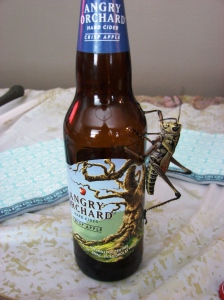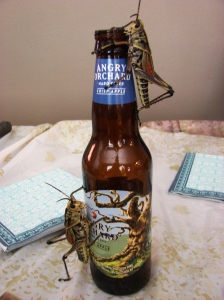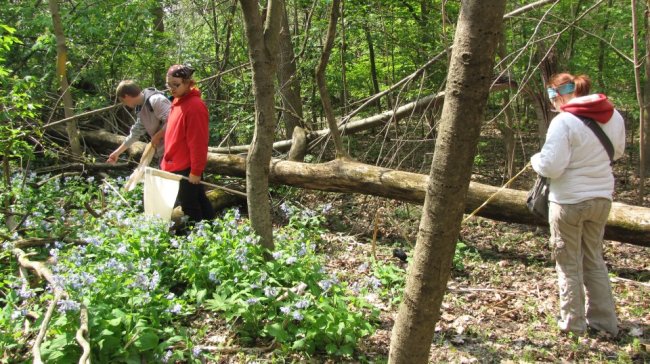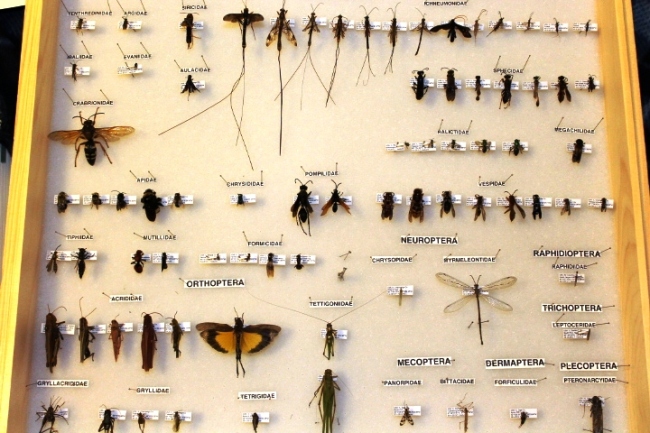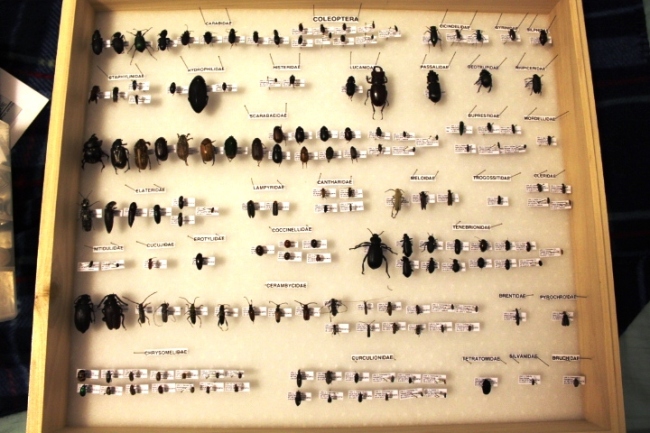Keeping Live Invertebrates
It has been a while since I’ve posted, but since it’s cold out I can’t really post collecting trips (though I do have a fun three part post coming up), so I thought I would give you all some info on one of my favorite hobbies. To a lot of people, keeping live invertebrates is a strange and foreign concept. Even more so when you say that it involves bunches of tarantulas, beetles, cockroaches, scorpions, amblypygids, true spiders, and mantids.
Now, I can certainly understand how some people are unnerved by this, but it is not as scary as it seems. The invert world gives hobbyists a very wide variety of creatures that they can keep as pets. I look at it as keeping several different breeds of dogs or cats. These just take up less space and have much less demanding husbandry.
For most of these creatures, all you really need is a space for an enclosure, food (which can range from vegetables and dry cat/dogfood, all the way up to live feeders, like crickets and roaches), water from time to time, and something to hide under. They really are quite simple to keep and can be very rewarding. I recently had my first peppered roach molt to adulthood and it’s an absolute beauty. Two of my mantids will be having their final molts as well within a month, so I’m very excited for that to happen.
When it comes to space, a lot of it actually goes on the keeper rather than the pet. I’ve seen people make absolutely amazing enclosures for their invert pets, while others (like me) keep them very sparse and on the smaller side. Both sides have their positives and negatives. Many keepers like to give their pet an enclosure that mimics its natural environment, even going as far as putting in live plants. The more natural the enclosure, the more work the keeper will likely have to put in, but the invert will be in a more naturalistic setting that it can enjoy. Most inverts do well with a simple enclosure and can be kept like that for their entire lives.
Another perk of keeping inverts is that they are typically short lived. Mantids won’t usually live for more than a year, and many true spider species will not live much longer than a year. Many roach species will live for 1-2 years. Now, there are always exceptions to the rule. Sand spiders (Sicarius sp.) can live for a decade and most tarantulas can live for more than 5 years, with certain genera (Brachypelma and Grammostola being most noted) can push 20-40 years! That’s a very long lived pet!
If you are thinking about buying or even going out and finding your own invert pets, do you research first. Many of these wonderful creatures have simple husbandry, but there are always exceptions to the rule and some species can be considered more advanced than others for a variety of reasons. You certainly would not want to start off with an advanced species if you have not gained experience with a starter species first! That being said, thorough research can lead to advanced species being one of the first being bought, but this likely is not what normally happens.
As an example, in the tarantula world, people typically start off with something like a rose hair (Grammostola rosea) or Mexican red knee (Brachypelma smithi), while some the more adventurous ones will start off with a species of pink toe (Avicularia sp.). These are considered to be beginner species because they are usually docile, hardy, easy to find in the pet trade, and do not have medically significant venom. After gaining some experience with these species, keepers can move on to intermediate species, such as those in the genus Psalmopoeus or Hapalopus. Some keepers skip the intermediate stage and move right to advanced species, such as those in the genus Poecilotheria or Haplopelma. Note: please only do that if you are comfortable with the species you already have, have done your research on these new species, and are willing to take on the potential hazards keeping these can present. Intermediate or advanced species are typically very skittish, can be defensive or aggressive, move very quickly (Poecilotheria will “teleport” across their enclosures), and may have medically significant venom.
For those of you that may still be on the fence about keeping live inverts as pets, there are a wide variety of orders, families, and species you can choose from. Don’t want a tarantula? You can keep beetles as pets. Feeling adventurous? Maybe a scorpion or huntsman spider is up your alley. These “bugs” are “ugly”, how bout something cute? That jumping spider on the side of your house is pretty freaking cute. Want something weird looking? Amblypygids and mantids are always a good way to go. I even know people that rear caterpillars into beautiful cecropia moths. There is something out there for everyone, especially if you hold your mind open to all the options and are willing to check out the wide world of invertebrates that we live in.
Great Sand Dunes National Park
Recently I went on a family vacation out to Colorado. While of course we were there to see the scenery and do some hiking, but I just couldn’t pass up the chance to do some collecting in a whole new state. The highlight of the trip for me had to be Great Sand Dunes National Park. This was a beautiful oddity, large sand dunes on the edge of the Rocky Mountains. Even stranger was that people could rent sand boards or sleds to go down the dunes once they reached their desired height. Looked like fun though!
One of the things that really struck me about this place was that in the visitor center there were pictures of a tiger beetle everywhere! This was something I hadn’t seen before. The staff at the park were actually trying to educate people on an insect. There were postcards, pennies, a painting, a whole display dedicated to the beetle’s ecology…it was an amazing thing to come across. Needless to say, I got very excited and wanted to try to find one of these beetles.
The Great Sand Dunes tiger beetle (Cicindela theatina) is a species endemic only to these dunes. This gives it a very small habitat and people are allowed to partake in recreational activities throughout the dunes. While this sounds like bad news for C. theatina, people aren’t as active in the places where the beetles are. Instead, they prefer to climb the dunes or play in Medano Creek. That and ATVs aren’t allowed in the park, dramatically cutting down on habitat damage (unlike what is seen at Utah’s Coral Pink Sand Dunes State Park).
After crossing the creek, I casually wandered about the vegetation before making my way up the dunes. There were plenty of small bees flying about, always catching my eye, but never being C. theatina. There were a large number of grasshoppers as well, perfectly camouflaged and springing up at the last moment.
The sparse vegetation still offered a refuge to invertebrates, especially those fleeing the hungry robber flies.
Finally I saw one! A beautiful C. theatina zipped in front of me. I got down to try to get a picture and off it went. I saw where it landed though and tried again. Same result. Third time’s the charm right? Wrong. After a couple more attempts, the beetle decided it had had enough of my nonsense and flew off where I couldn’t see it. It was a disappointing, but exhilarating moment (or should I say 15 minutes) because it meant that the beetles were here and I just had to keep trying. But first, I had to walk up the dunes with my family. The view from where we stopped was breathtaking, even if we didn’t climb the highest dune (699 feet is definitely up there, but we still managed to break 500 feet).
As they say, going up is the hard part, and how right they were. It took the better part of an hour to reach our highest point, but only about 10 minutes to get back down. Descent would have been faster with a sand board, but it was more entertaining to watch other people try that approach (spoiler: there were several people that went face-first into a dune). Once at the bottom, I beelined for a patch of vegetation to continue my search. Apparently I had chosen well, for there were at least 10 C. theatina that fled my approach. Moving much more cautiously, I managed to sneak up on a nice specimen. And then he was gone. Not to be stopped, I followed another who was running across the sands. I got close, it ran. I got close again, it ran. Repeat this several times (and include the girls that were just watching me and laughing as I army-crawled after this beetle) and finally I got my shots!
This is a gorgeous beetle, with lovely coloring and a great pattern. It cooperated with me for about a minute and then flew off to do tiger beetle things. I’m sure I could have given chase for more images, but I was just happy that I got the ones I did. This ended up being my highlight of the entire vacation, even though I did collect several very nice beetles. It’s just hard to beat a unique and rare species such as this. These beetles need to be protected so that future generations can enjoy them, from an entomological perspective and from the perspective of someone who takes joy in seeing something so small and beautiful.
For some more fun reading on C. theatina, check out this Beetles in the Bush post here.
Lub is in the Air
It has become a bit of a tradition for me to bring insects of some sort to Christmas (my little cousin loves them). So this year, I brought along a couple of lubber grasshoppers (Family Romaleidae) for everyone’s enjoyment. I borrowed them from the University of Illinois Urbana-Champaign insectary so I could do a bit of outreach while home on winter break.
As I enjoyed a drink, I was asked to get one of the lubbers out. I grabbed the male since he was a bit more active and let him crawl around on me. For some reason, he decided he had had enough of my hand and awkwardly hopped to the table. From there, he proceeded to climb right up my drink and relax on top.
Turns out he’s quite the climber. But why stop there? I picked the female out of the enclosure and put her on the table as well. It didn’t take her long before she found the bottle and started climbing up.
Once they both got to the top, they stopped moving and just sat, content to be at the highest point (or they were feeling a bit tipsy since the male fell off a few minutes later). After a few minutes of their antics, I returned the lubbers to their enclosure, with a Christmas feast of broccoli and lettuce.
When a Collection Comes Together
I’m an avid insect collector. As soon as it starts getting warm, I run out into the woods with my net and backpack of vials and other miscellaneous items. It’s always an enjoyable excuse to get out into nature to get some fresh air.
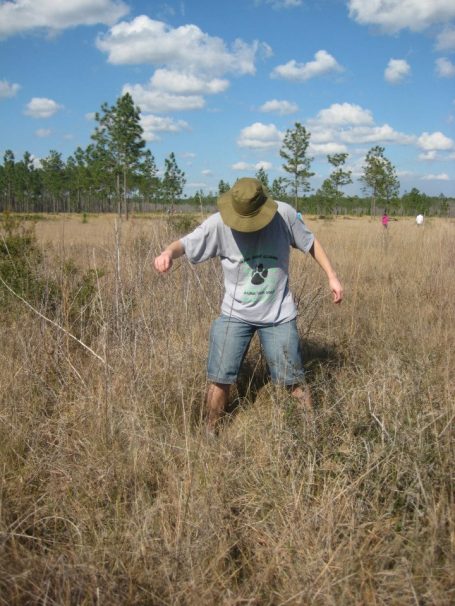
Though things can go wrong when you sink into water that goes over your boot tops (photo courtesy of Ellie Moen)
It really gets fun when my fellow entomophiles join me in the woods and we can really get the collecting going. We all catch interesting insects and trades undoubtedly occur as people catch insects from certain highly sought after families.
As a graduate student, I just finished taking an insect taxonomy course, and one of the course requirements was that I make an insect collection. Considering that I had been collecting insects and putting them in my freezer for two years, I was pretty set. The issue was that I hadn’t really pinned up all that much yet (and don’t even get me started on labeling…). But I knew I had to do it and I knew that I was going to enjoy it.
After spending innumerable hours working on it, I was finally able to turn in my collection. I did go a bit over what the requirements were, but I was just trying to empty my freezer and get things pinned up. And here it is:
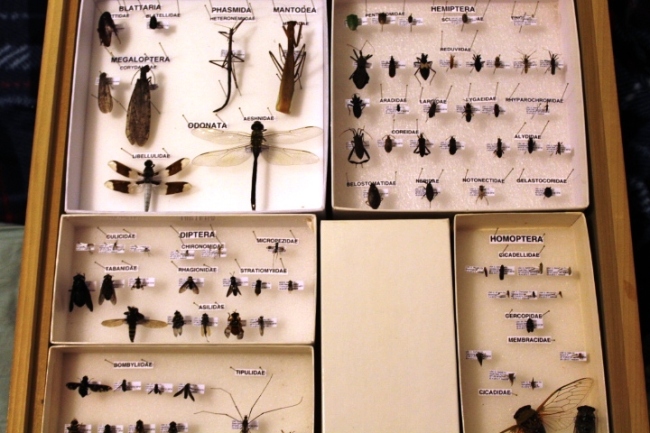
Box #2, containing assorted orders. Homoptera is no longer an accepted order name, but it was permissible for this class’ collection
And saving best for last…
And as an added bonus, my freezer is now almost completely devoid of insects (which my roommate is super happy about)!
